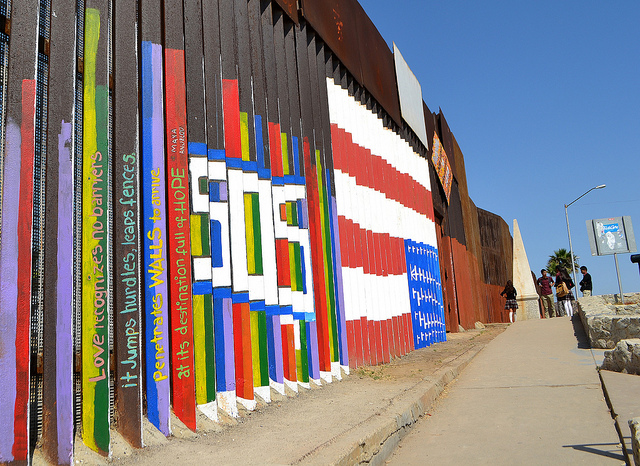How President Trump's Plan to Pay for the Border Wall Will Impact You

By:
After President Donald Trump signed an executive order Wednesday, which enforced the construction of the U.S.-Mexico border wall, questions began to swirl about who would pay for it.
As a possible option to help finance the wall, the White House suggested a plan Thursday to impose a 20 percent tax on anything imported from Mexico, White House Press Secretary Sean Spicer told reporters.
However, this move could directly impact the American consumer.
 Flickr/Brooke Binkowski - flic.kr
Flickr/Brooke Binkowski - flic.kr
Economists and politicians have warned that the risks of such a sizable tariff outweigh the benefits.
The price of anything imported from Mexico will increase if a tariff is put into place, Gregory Weeks, Ph.D., political science professor, blogger and expert in U.S.-Latin American relations, told ATTN:. “This will hurt U.S. consumers,” Weeks explained. “Many people are likely not aware which goods they buy are coming from Mexico.”
The Southern border wall would cost between $12 billion and $15 billion, Senate Majority Leader Mitch McConnell said at a press conference Thursday. But the taxation of Mexican imports to the U.S. could stand to make $10 billion annually and the president has spoken to Republican members of congress about the plan, Spicer explained.
Trump discussed double-digit tariffs throughout the course of his campaign, focusing particularly on goods from China. At a meeting with the New York Times editorial board in January, he reportedly spoke in favor of a 45 percent tax on Chinese imports, but he later denied saying he would do such a thing.
At the Republican debate in Miami, Florida, Texas Senator Ted Cruz explained that a 45 percent tariff might increase the price of goods by up to 45 percent. “When you go to the store, when you go to Walmart, when you are shopping for your kids, the prices you pay go up,” he said.
Mexico is the second largest supplier of agricultural goods to the U.S., according to a 2015 report by the Office of the U.S. Trade Representative.
_0.jpg?auto=format&crop=faces&fit=crop&q=60&w=736&ixlib=js-1.1.0) Sonny Abesamis, Flickr - flickr.com
Sonny Abesamis, Flickr - flickr.com
In 2016, the United States imported over $9 billion worth of fresh fruit and vegetables from Mexico. In 2012, 74 percent of produce imported to the U.S. came from Mexico. The long list included everyday produce like tomatoes, peppers, onions, asparagus and cucumbers. Other top import categories are vehicles, mineral fuels like coal, and medical instruments.
These prices will especially hurt lower income Americans who cannot afford to pay higher prices, Weeks said. “The cost of many food items in the U.S. will go up immediately if this is implemented,” he added.
It is likely that Mexico will respond by imposing its own tariffs on the United States, Weeks noted. If prices go up on anything exported from the United States to Mexico, low-income consumers on the other side of the border would no longer be able to afford those goods. “Since Mexico is the second largest destination for U.S. exports this will affect a lot of companies, which will ripple out to their employees,” Weeks explained. "If it [the tax] is implemented, it won't end well."
